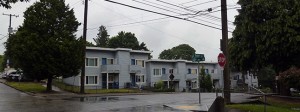In 1880, he was noticeable. Dressed in long coat and top hat, his one hand wielded a magic wand punctuating the elixir in the other. His concoction cured all from headaches, to “kidney trouble.”
Today’s snake oiler is college educated, marketing savvy and lends an infectious passion to Smart Growth, the 21st Century solve-all. He and his slick supporters, claim to repair everything from jobs and climate change to social justice and traffic congestion, all while returning the environment to Hiawathan pristinity.
Unlike his 19th century counterpart, today’s Smart Growth planner has wrought financial wreckage and shattered opportunities across a landscape of American communities. Sleek rail trains, trimmed public parks and decoratively obstructed “calm” streets hide his customers’ dashed hopes.
Once community members escape the trance of mixed-use efficiency, granite counter tops and gleaming stainless appliances, once they realize the meandering bike path and community swing sets are mandates, not options, the wake-up is jolting.
As Smart Growth planning coaxes people out of single home suburban living and into boxed quarters near transit lines, parents soon realize the land their children play on is no longer theirs. Dad cannot build a backyard sandbox with his kids or spend the weekend constructing a new tree-house as a family project.
The economics of Smart Growth are sobering and hit few harder than the poor. As growth boundaries limit new home construction outside of the perimeters, concentrated construction within the defined area drives housing prices beyond the reach of most.
According to Wendell Cox, prior to the Smart Growth surge of the 1990’s an average home cost just 2.5 to 3 times the median income of community residents. A person earning $40,000 annually could likely purchase a home for $120,000.
But, in 2006, in Smart Growth cities like Boston, Portland and San Diego, homes respectively cost 6, 5 and 10.5 times the median family income. Homes costing just 4 times or more annual income are considered “seriously unaffordable.”
A family earning $125,000 in San Diego would be hard-pressed to afford a home 10 times that amount. Routinely, they shrink their living standards and move into ever smaller dwellings.
Housing costs in Seattle are so exorbitant; people are turning to renting and downsizing. The Wallingford Apartments offer 190 square feet of living space at a cost of $825 per month.
But the poor do not earn $125,000 or even half of that. So, what becomes of them under Smart Growth? Look no further than Portland, Oregon, heralded by the NYT as the epitome of prescriptive planning.
In the 1980’s, Portland was one of the most diverse and affordable markets for single family homes in the country. By 1996, over 20 years of Smart Growth planning had taken its toll. Traffic congestion, housing shortages, increased home costs, higher taxes, costly rail transit and private backyards swapped for public open spaces created a picturesque visitors’ paradise borne on the backs of the poor and middle class.
What was once a diverse city is now mockingly called the ‘whitest city in America.’ In spite of affordable housing programs and years of planner’s good intentions, Portland has created a ring of poverty that has shoved poor blacks into low-income areas as the wealthy push them out of the city core. Then City Commissioner, Gretchen Kafoury said, “Oh my God! We thought we were doing a good thing.”
In San Francisco, 36% of poor black families living in “communities of concern,” will be displaced to make way for transit-oriented communities. According to the Draft Environmental Impact Report, “displacement is a significant impact that cannot be mitigated.”
The suffering of the poor under Smart Growth extends beyond housing. As community members pay rising mortgages and taxes, the middle class is dwindling. A 2013 study by the Center for American Progress shows that poor families rise out of poverty fastest when living in an area with a strong middle class. With the middle class in Smart Growth areas shrinking and housing costs rising, where does that leave the poor?
Call it Smart Growth, sustainable development or regionalism. To poor and low-income families, it is pure snake oil.



